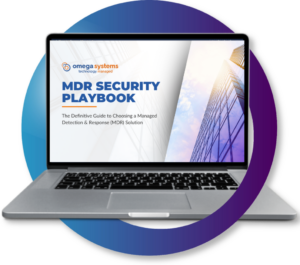

When evaluating the right Managed Detection & Response (MDR) solution for your organization, the first and most critical step is to clearly define your security needs and objectives. This should involve a thorough assessment of your current security posture, identifying both your strengths and areas of vulnerability, as well as understanding your long-term goals.
Begin by identifying the key assets that need protection. This could include sensitive customer data, intellectual property, and/or critical infrastructure. Consider the types of threats your organization is most likely to face – whether it’s ransomware, insider threats, or advanced persistent threats (APTs). Conducting a risk assessment during this stage will help you understand the potential impact of these threats and determine the level of coverage required from an MDR provider.
Similarly, conduct a vulnerability assessment to uncover any weaknesses in your current security setup. This could involve a combination of internal audits, third-party penetration testing, and analysis of past security incidents. Pay attention to areas like endpoint security, network defenses, and cloud security. Knowing where your vulnerabilities lie will allow you to choose an MDR solution that can effectively address these gaps.
Consider how your security needs align with your organization’s long-term business objectives. Are you planning to expand into new markets, adopt new technologies, or comply with emerging regulations? Your MDR solution should not only address current threats but also scale with your business as it grows and evolves. This includes ensuring that the solution can adapt to new compliance requirements, such as PCI DSS, HIPAA, CMMC, SEC or other industry-specific regulations.
Finally, evaluate what you need from an MDR provider in terms of coverage, compliance, and scalability. Coverage refers to the breadth of the solution – does it protect all endpoints, networks, and cloud environments? Compliance is about ensuring that the detection & response solution helps you meet all relevant regulatory requirements. Scalability involves the solution’s ability to grow and adapt alongside your organization, ensuring ongoing protection as your business evolves.
Knowing your enemy is half the battle. Once you familiarize yourself with the most prevalent security challenges, you can gain critical insights and effectively leverage an MDR solution to build robust defenses.
By clearly defining your security needs and objectives, you set the foundation for selecting an MDR provider that not only meets your current requirements but also supports your organization’s future growth and success. For a deeper dive into how to effectively define and assess your security needs, and to explore the next steps in selecting the right MDR solution, read our full MDR Security Playbook.
 The Definitive Guide to Choosing an MDR Solution
The Definitive Guide to Choosing an MDR SolutionNavigate the complexities of cybersecurity with our 5-step MDR Security Playbook & discover how to choose the right managed detection & response solution for your business.